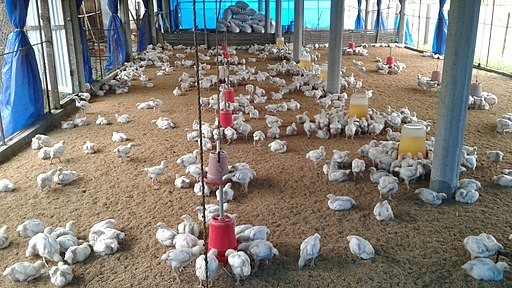Chicken and other poultry are very sensitive to changes in temperature and environment, making them very vulnerable to infection and flock injury. Since chickens are usually kept in close quarters, the diseases they acquire tend to spread more quickly. A viral infection called Marek's is one of the most common, highly contagious diseases affecting chickens.

What is Marek's Disease?
Marek's disease is one of the most common illnesses caused by the chicken herpes virus in small flocks. It is one of the most ubiquitous avian infections identified in chicken flocks worldwide. Almost every flock is presumed to be infected, except those maintained under strict pathogen-free conditions.
The percentage of clinically sick birds in a flock depends on the strain of the virus and the breed of the bird. The disease is typically observed in fowls between 6 and 30 weeks of age, although it can also develop in older birds.
Chickens are the most important natural host for Marek's Disease Virus (MDV). Quail can be naturally infected, while turkeys can be infected experimentally. Since MDV is not zoonotic, it cannot be spread across species. This means that the eggs and meat from chickens who contract Marek's disease are safe to eat and will not cause any harm to humans.
Fowls can get infected with Marek's Disease by inhaling virus-laden dander. Although MDV can be easily killed in its purified form, it can live for years in the dander. This means that once the disease enters a chicken coop, the environment will most likely be contaminated for a long time, even if all the birds are gone. There is currently no effective treatment for Marek's disease, and preventive strategies include vaccination, biosecurity, and genetic resistance.
Tracing the Evolution of MDV
Geneticists and disease biologists from the University of Oxford and Ludwig Maximilian University of Munich worked together to trace the evolution of MDV. Their study "Ancient chicken remains reveal the origins of virulence in Marek's disease virus" reveals how the virus transforms to become more virulent while suggesting better ways to treat viral infections.
An international team of scientists isolated DNA from chicken bones excavated from 140 archeological sites in Europe and the Near East. The recovered and reconstructed ancient MDV sequences revealed that MDV had been widespread in European chickens at least 1,000 years before the disease was first described by Hungarian physician-pathologist József Marek in 1907.
When the disease was first described, it only led to mild symptoms in older chickens. As chicken consumption dramatically increased in the 1950s and 1960s, MDV has continued to evolve and become increasingly aggressive despite the development of vaccines. After comparing viral genomes gathered from modern and ancient birds, they found the genetic alterations responsible for the increased virulence of the modern virus.
The ancient genetic sequences also allowed them to resurrect ancient biological processes using cellular assays. The results demonstrate that ancient strains were significantly milder than their modern counterparts.
RELATED ARTICLE: Gene Editing on Chickens Done To Identify, Alter DNA Parts To Hamper Bird Flu Spread
Check out more news and information on Chicken in Science Times.














